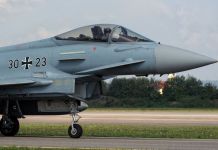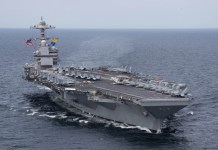India’s Modi government has given a big push to defense modernization but the country’s overall military budget has seen a negligible increase of 1.48% — from last year’s Rs 4.71 lakh crore to Rs 4.78 lakh crore in the FY 2021-22. Experts call it “disappointing” given the nine-month-long military stand-off with China in Eastern Ladakh.
Will Beijing Follow Jaishankar’s Prescription To End Stalemate In India-China Ties?
Union Finance Minister Nirmala Sitharaman on Monday presented the Union Budget 2021-22. The pensions component of the budget suffered a significant dip from Rs 1.34 lakh crore last year to Rs 1.25 lakh crore in the revised estimates and further reduced to only Rs 1.15 lakh crore this year.
The allocation for capital expenditure has been increased to Rs 1,35,060 crore ($18 billion) from Rs 1,13,734 crore last year, representing a hike of 19 percent. “This is the highest-ever increase in capital outlay for defense in 15 years,” Defense Minister Rajnath Singh said.
The revised estimates for 2020-21, with an increase of Rs 20,776 crore, shows the emergency weapons purchases by the country last year from multiple countries to shore up its defense preparedness against Chinese incursions on multiple fronts. India had to make urgent purchases of weapons, which included drones, missiles, precision-guided munitions, assault rifles, along with winter clothing and equipment for the soldiers in Ladakh.
I specially thank PM& FM for increasing the defence budget to 4.78 lakh cr for FY21-22 which includes capital expenditure worth Rs 1.35 lakh crore. It is nearly19 percent increase in Defence capital expenditure. This is highest ever increase in capital outlay for defence in 15yrs
— Rajnath Singh (@rajnathsingh) February 1, 2021
The military experts in India have been demanding a far greater increase in the defense budget to build deterrence against the combined threat of China and Pakistan. However, the record economic contraction last year prevented the government from giving it a significant boost.
The lack of adequate funds has led the Indian military to flag several operational deficiencies on many fronts, such as ammunition, drones, submarines and warships, fighter jets, among others.
The marginal increase in the defense budget this year has attracted some criticism among military experts although the economic conditions prohibit any more expenditure. India’s defense budget consists of three components — revenue, pension, and the capital component.
The allocation for the pension component has been slashed, while that of the capital component has been significantly increased. The overall hike of 1.48 percent is not good enough, the experts contend, considering the situation at the borders.
“Overall, there has been no increase in the defense budget, because if you take into account the inflation, etc., the budget is pretty much the same… but it’s been a tough year not only for India but [also] for the [the entire] world. We have seen that there has been a burgeoning demand because of additional deployments and additional requirements that have cropped up, which have not happened before,” Lt. Gen. Satish Dua said in an interview with Bharat Shakti.
However, the experts expect more revenues coming in the revised estimates.
The pension allocation was highlighted as a concern, with few questioning the need for a significant reduction in the component. However, the government clarified that the last year it was an extra Rs 18,000 crore since arrears had to be paid up.
#AtmaNirbharBharatKaBudget pic.twitter.com/f5JU9J3ZHL
— Rajnathsingh_in (@RajnathSingh_in) February 1, 2021
India was the third-largest military spender in the year 2019, but the figure for the country’s rival and neighbor China has been almost four times more, with the US spending 10 times more. The bulk of the expenditure goes into pay and pensions of the huge number of armed forces personnel, leaving little for defense modernization.
Experts also contend that India may have to look at alternative ways to increase its defense budget, such as monetizing the existing defense lands, held in huge reserves by the Ministry of Defense across the country. The process of removing encroachments on that land is also slated to help the military raise funds, on which the government is already working.
According to the report of the 15th Finance Commission, the expenditure on defense services as a proportion of Gross Domestic Product (GDP) declined from 2% in 2011-12 to 1.5% in 2018-19 and to 1.4% in BE 2020-21.
The rate of defense revenue expenditure increase was faster between 2011-12 and 2018-19, around 10%, than the increase in defense capital outlay, 4.7%, which resulted in a reduced share of defense capital outlay in total defense services expenditure (excluding defense pension) from 40% in 2011-12 to 33% in 2018-19, according to the report.
Follow EurAsian Times on Google




